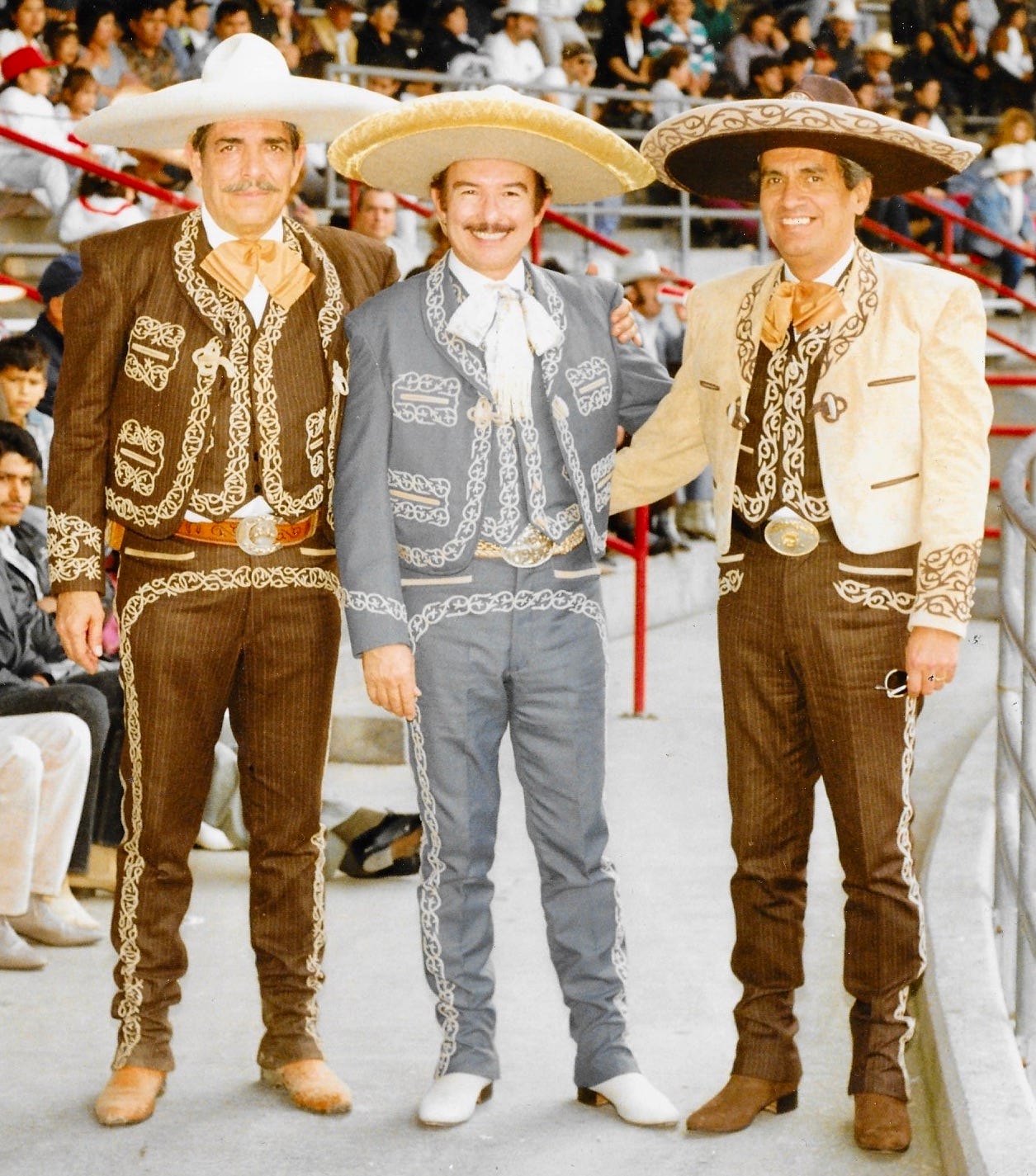
Once the most powerful Latino politician in California, Richard Alatorre (far right) wears a classic charro outfit as if it were the uniform of The Golden Palominos, a nickname with which I christened the Los Angeles Eastside political machine that for many years called the kingmaking shots for Latinos in the Golden State.
That’s the biggest question I keep being asked by readers who have seen some of the early promotions for my forthcoming book, The New Kid in Town: The Los Angeles Herald Examiner, the Golden Palominos, and Lesser California Attractions.
Well, you won’t find the golden palominos on any West Coast travel book, though that may be an idea for the future.
Perhaps it was just a cheap shot on my part. But the golden palominos is a nickname I gave to the clique of powerful Mexican American politicians who were running Latino politics in California when I arrived in the Golden State to write a three-times-a-week column for the Herald Examiner.
I dropped the name in a column, and I was surprised it caught on.
I didn’t think much of it until a few days later when I called the Sacramento office of the California State Assemblyman who was the leader of the clique. It was around noon, and a receptionist said she would check to see if Assemblyman Richard Alatorre was available to take my call. A few minutes later she returned to the line, and I thought I could hear her holding back a laugh as she said: “The assemblyman asked if he could return your call in half an hour. He said to tell you that the palomino is grazing.”
At first I thought I’d misheard her.
“Miss,” I said. “Did you say that ‘the palomino is grazing’?”
“Yes.” She was barely able to contain some giggles. “He said to tell you that word-for-word exactly.”
Aha! Soon, The Golden Palominos became a term in common use by those very Latino politicians themselves. Many of them called my newspaper asking for extra copies of that issue. One of them, I understand, even had special tee-shirts made. Mind you, at the time this clique was a boys’ only club. There were no women in the group, and no Mexican American women held elective office. It would prove to be an exclusionary mistake. The Chicano movement itself, after all, had been a civil rights activism borne out of machismo, with mostly men in leadership roles. For good or bad, machismo was in the culture.
The Golden Palominos, though, would pay dearly for their exclusion of Latinas. In 1982, a Chicana named Gloria Molina scored a historic political upset, using a “Beat the Palominos” war cry to win a State Assembly election against a well-financed candidate endorsed by the establishment clique. She became Ms Magazine’s Woman of the Year, and she would go on to win more historic elections to the Los Angeles City Council and the county’s Board of Supervisors. When Antonio Villaraigosa later made even bigger history, winning election as Los Angeles first Latino mayor of modern history, he did so as a candidate belonging to Molina’s own political machine, not that of the Golden Palominos.
So that’s the book title reference. The Golden Palominos were forged out of the Chicano Power movement of the 1960s and 1970s. They were supported by Cesar Chavez’s United Farmworkers of America union, then broke ranks with it, just as they once supported and later bickered with Jerry Brown and his political campaigns. And yet, despite their humiliation by Gloria Molina, the Golden Palominos had a long-lasting impact.
In 1981, Alatorre was named by the Assembly Speaker as chairman of the powerful committee overseeing California’s congressional and legislative redistricting and reapportionment after the 1980 Census. In that position, Alatorre corrected past political map gerrymandering that resulted in three new congressional districts for predominantly Latino communities in Southern California alone and dramatically improved the number of Latinos and African American elected to Congress and the Legislature in the future.
And the name Golden Palominos, while later only whispered by the butt-whipped old boys’ clique, eventually found a place in California history, with the now-retired Gloria Molina recalling in a UCLA archival interview — with understandable disdain, of course — that “The so-called ‘Golden Palominos’ went off and met and…”
Went wherever old horses go to die.
Tony Castro is the author of seven books, including Looking for Hemingway: Spain, The Bulls and a Final Rite of Passage (Rowman and Littlefield), which NPR named one of the best books of 2016. The New Kid in Town: The Los Angeles Herald Examiner, the Golden Palominos, and Lesser California Attractions will be published in 2021.


